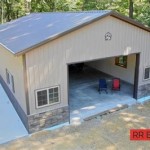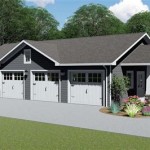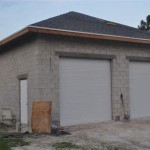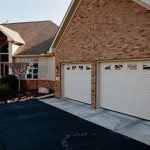Can You Put a Dryer Vent In The Garage Ceiling Florida Building Code?
The placement of a dryer vent is a critical consideration when designing or renovating a home. Proper venting is essential for efficient dryer operation, preventing moisture buildup that can lead to mold and mildew, and most importantly, ensuring safety by reducing the risk of fire. In Florida, the Florida Building Code (FBC) sets specific requirements for dryer vent installations, including where vents can and cannot be located. The question of whether a dryer vent can be installed in a garage ceiling in Florida requires a careful examination of the FBC and its practical application.
The Florida Building Code adopts the International Residential Code (IRC) with Florida-specific amendments. This means that the regulations regarding dryer vent installations are primarily based on the IRC, but builders and homeowners must also be aware of any state-level modifications or interpretations. Garages present particular challenges because they are often attached to the main dwelling and may contain ignition sources like vehicles and tools. Therefore, any dryer vent installation in a garage ceiling must meet stringent safety standards to avoid potential hazards.
Understanding the code requirements involves not only reading the specific sections related to dryer exhaust systems but also considering other relevant sections pertaining to fire safety, ventilation, and the construction of garages. Due to the complexity of these considerations, it's wise to consult with a licensed contractor or a building code official to ensure full compliance with all applicable regulations. Local jurisdictions may also have interpretations or amendments that further impact the legality and safety of a garage ceiling dryer vent installation. The potential for misinterpretation or oversight highlights the need for professional consultation.
Key Point 1: Florida Building Code Requirements for Dryer Vents
The Florida Building Code, adapting the International Residential Code (IRC), meticulously outlines the requirements for dryer exhaust systems. These requirements are designed to ensure both efficiency and safety. Several key aspects of the code directly influence the viability of installing a dryer vent in a garage ceiling.
Firstly, the code specifies the maximum length and allowable bends for dryer vent ducts. Longer duct runs increase the risk of lint buildup, which can impede airflow and create a fire hazard. The FBC limits the total equivalent length of the duct, taking into account not just the straight run but also the added resistance from elbows and other fittings. If a garage ceiling installation necessitates a longer or more convoluted duct path, it may not be compliant with these limitations. The dryer manufacturer's installation instructions often specify more restrictive venting requirements that must also be considered.
Secondly, the material used for the ductwork is also regulated. The FBC typically requires rigid metal ductwork, often aluminum or galvanized steel. Flexible ductwork, especially the plastic or foil type, is generally prohibited due to its tendency to sag, restrict airflow, and accumulate lint. Rigid metal ductwork is crucial for minimizing fire risk and maintaining adequate ventilation. Installing rigid ductwork in a garage ceiling can be challenging due to space constraints and the need to navigate around existing structural elements and utilities.
Thirdly, the termination point of the dryer vent must comply with specific clearances and distances from doors, windows, and other openings into the building. This is to prevent exhaust fumes and lint from re-entering the home. A garage ceiling installation may present challenges in meeting these termination requirements, especially if the garage is close to other parts of the house or has limited exterior wall space. Ensuring the vent terminates in a location that provides adequate dispersion of exhaust and minimizes the risk of re-entry is essential for compliance.
Finally, the code requires that the ductwork be properly supported and secured to prevent sagging and potential damage. This is particularly important in a garage ceiling installation, where accessibility for maintenance and inspection may be limited. Proper support ensures the long-term integrity of the venting system and reduces the risk of issues arising from improper installation. Periodic inspections are also recommended to ensure the vent remains free of obstructions and properly connected.
Key Point 2: Specific Challenges of Garage Installations in Florida
Garages in Florida present unique challenges for dryer vent installations due to the state's climate, common construction practices, and the specific purpose of a garage. These factors can significantly impact the feasibility and code compliance of putting a dryer vent in a garage ceiling.
Florida's hot and humid climate can exacerbate the issues associated with improper dryer venting. High humidity levels inside the garage, combined with dryer exhaust, can create a breeding ground for mold and mildew. This is particularly problematic if the garage is not well-ventilated. A garage ceiling dryer vent installation must be designed to minimize moisture buildup and prevent condensation within the ductwork.
Many Florida homes are built with concrete block construction, which can make it difficult to run ductwork through walls or ceilings. Penetrating concrete block requires specialized tools and techniques, and care must be taken not to compromise the structural integrity of the building. Installing a dryer vent in a garage ceiling may involve navigating around concrete block walls and other structural elements, which can complicate the duct routing and increase the risk of non-compliance with code requirements.
Additionally, garages often serve multiple purposes, including parking vehicles, storing tools and equipment, and sometimes even acting as workshops. This means that the garage environment can be dusty, oily, and subject to temperature fluctuations. These conditions can negatively impact the dryer vent system, leading to premature wear and tear, increased lint accumulation, and potential fire hazards. Ensuring the ductwork is properly sealed and protected from the elements is crucial for maintaining its performance and safety.
Furthermore, the presence of vehicles and other flammable materials in the garage necessitates extra caution regarding fire safety. The dryer vent must be installed in a manner that minimizes the risk of ignition from sparks or hot surfaces. Proper clearances from combustible materials and the use of fire-resistant materials are essential for preventing a fire. The garage environment demands enhanced safety measures compared to other areas of the house, making compliance with the FBC even more critical.
Key Point 3: Alternatives and Considerations for Safe Dryer Venting
If a dryer vent cannot be safely or legally installed in the garage ceiling, several alternative venting options and important considerations should be explored to ensure safe and efficient dryer operation. These alternatives may involve different locations for the dryer, alternative venting methods, or modifications to the garage itself.
One alternative is to relocate the dryer to a different area of the home where proper venting is more easily achieved. This might involve moving the dryer to an exterior wall location where a short, direct vent can be installed. While this could be costly, the benefits of a safe and compliant venting system can outweigh the relocation expense. Prior to relocation, the structural integrity of the area being used to house the relocated dryer must be confirmed.
Another option is to use a ventless dryer. Ventless dryers use condensation or heat pump technology to dry clothes without the need for an external vent. While ventless dryers may be more expensive and have longer drying times, they eliminate the need for ductwork and can be installed in locations where traditional venting is not possible. However, ventless dryers still require proper electrical connections and may require a drain for collected moisture.
If relocation or a ventless dryer is not feasible, explore alternative routing options for the dryer vent. This might involve running the ductwork through walls or under the floor to reach an exterior wall. These alternative routes may require more complex construction and careful planning to ensure compliance with the FBC, but they can provide a solution when a garage ceiling installation is not viable. It is very important to maintain clearances when rerouting ductwork and the ductwork should be secured every 6-ft.
Regardless of the venting option chosen, it is crucial to prioritize safety and consult with qualified professionals. A licensed contractor or a building code official can provide guidance on the specific requirements of the FBC and help ensure that the dryer vent system is installed correctly and safely. Obtaining the necessary permits and inspections is also essential for verifying compliance and protecting against potential hazards. Ignoring code requirements can result in fines, safety risks, and potential liability in the event of a fire or other incident. Proper ventilation will maintain air quality, reduce the chances of mold growth and improve safety.

Venting A Clothes Dryer Into Garage Doityourself Com Community Forums
Can An Electric Dryer Be Vented Into A Garage Quora

What Is Code For Dryer Vents

Atypical And Typical Dryer Vent Locations The Right Spots

Can A Clothes Dryer Vent In Mobile Manufactured Home Terminate The Crawl Space

Why Does Venting A Clothes Dryer Into Garage Attic Or Crawl Space Cause Problems

What Are The Code Requirements For An Outdoor Dryer Vent Cover

What Are The Code Requirements For An Outdoor Dryer Vent Cover
The Exhaust Of My Dryer Vents To Crawl Space House Is That Correct Should I Change It Or Leave As Appaly Has Always Been Like

Can You Vent A Clothes Dryer Through The Soffit
Related Posts








